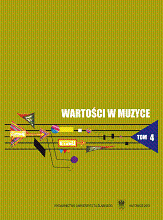Zaolziańskie instytucje kulturalne (po 1920 roku) i ich wpływ na kulturę ludową
Cultural institutions in Zaolzie (after 1920) and their influence on folk culture
Author(s): Magdalena SzyndlerSubject(s): Music
Published by: Wydawnictwo Uniwersytetu Śląskiego
Keywords: social values; Zaolzie; folk culture; cultural institutions
Summary/Abstract: Despite unfavourable political and economic conditions after 1920 the Poles in Zaolzie could cherish the folk culture thanks to cultural institutions. Especially Polski Związek Kulturalno-Oświatowy and the activity of its members in the Zaolzie area contributed to the maintenance of the elements of the Polish folklore. “Zwrot”, and later on “Kalendarz Zwrotu” were formed where the folklorists, musicologists, writers, poets, and linguists (among others Jan Tacina, Karol Hławiczka, Paweł Kubisz, Rudolf Żebrok and many more) could write. Thanks to the Folklorist Section, on the other hand, the field research began, which, in turn, contributed to the archivization of dialect texts and folk songs (among others Daniel Kadłubiec). Also, from the initiative of the FS, events and meetings propagating various levels of the regional culture started to be organised.
Journal: Wartości w muzyce
- Issue Year: 2012
- Issue No: 4
- Page Range: 144-150
- Page Count: 7
- Language: Polish

